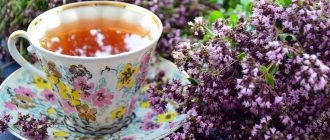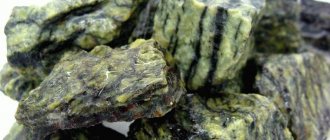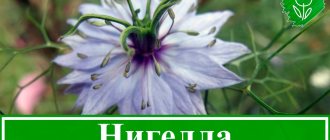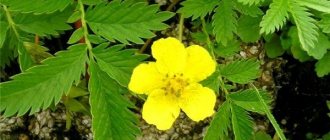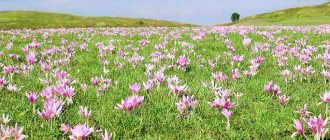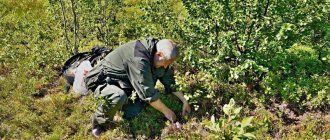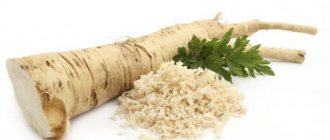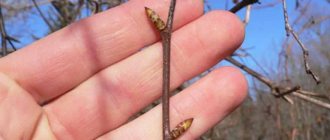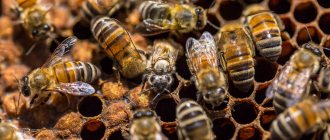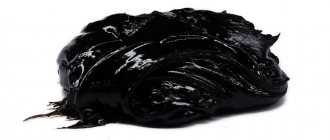Lungwort, as its popular name suggests - lung herb - is most effective for lung diseases (in particular tuberculosis), cough, hoarseness, bronchitis and bronchial asthma, has a healing and regenerative effect on the mucous membrane of the respiratory tract, has anti-inflammatory and disinfectant effects .
Externally used to treat hemorrhoids and to speed up wound healing. What are the medicinal properties and contraindications of lungwort, how to brew and take it for illnesses?
A few words about medicinal lungwort
Lungwort grows in light groves, along the edges of forests. The most suitable places for growth are areas with moist and deep soil from lowlands to foothills.
Natural medicine grows well in warm limestone substrates. This is a European plant, distributed from the east, central and southern parts of Europe to the Caucasus. To the west the grass reaches Arden.
Contains silicic acid, mucus, saponin and tannin (about 9%). The content of silicic acid at the end of summer is higher than in spring.
From a chemical point of view, the plant has not yet been fully explored. It has an anti-inflammatory, moderate mucolytic effect, increases blood clotting, and promotes the removal of fluids from the body.
Due to its unpretentiousness, lungwort is often grown as an early honey plant - food for bees, providing nectar from the end of March. In England, the young leaves of the natural medicine are a common addition to various spring salads and added to soups.
In some regions of our country, lungwort is classified as a plant in the Red Book of Russia (in particular, in the Moscow region).
Lungwort
Lungwort is a pollen-bearing and honey-bearing plant.
Lungwort grows in Crimea in the forest and forest-steppe zones, mainly in mixed forests, oak groves, and also along river banks.
A lot of it grows around our apiary in the mountains in a protected mountain forest, on the outskirts of which our apiary Honey Crimea is located. Here nature has created ideal conditions for her. There are many different types of lungwort, but the narrow-leaved variety is considered the best honey plant. The lungwort that bloomed in our apiary in May is shown in our photo.
This perennial plant blooms for 20-30 days. Lungwort flowers release nectar and pollen abundantly throughout the day.
Lungwort inflorescences are bright and have a beautiful soft purple or blue color. At the beginning of the flowering of the lungwort, the corolla and its petals are first pink, then become purple, blue, but by the end of flowering the inflorescence becomes purple or blue.
Bees love to visit the lungwort. The honey productivity of lungwort varies among different species, averaging about 70-80 kg per hectare. The lungwort produces the most honey nectar in the early stages of flowering, and later there is less nectar in the flowers.
Do we only get honey from lungwort?
We can only answer this question in the negative. Of course not. And not only because when lungwort blooms in Crimea, naturally, it is not the only one and the bee collects nectar from all the honey plants around and it is impossible to “instruct” it to collect nectar from only one plant (and thank God!). In the early spring, a lot of nectar that bees bring to the hive is used to feed themselves and for the development of the bee colony. Therefore, of course, some percentage of the nectar from lungwort will be contained in honey, but this is only a “small contribution” of this amazing plant to the composition of our honey, which we call “Maysky”. It contains not only healing nectar from the lungwort, but microscopic pollen grains from this plant, transferring all the beneficial properties of the plant to natural honey from our apiary.
About the properties of lungwort
Lungwort has been used by people for a long time as a medicinal plant, especially for respiratory diseases. But modern pharmacology practically does not use this plant. Lungwort is used only as a dietary supplement, which is an excellent source of flavonoids and polyphenols.
Lungwort contains silicic acid, tannins, mucus, large amounts of manganese, ascorbic acid and iron. Thanks to the vitamins, micro and macroelements contained in lungwort, it has a number of beneficial properties, which is inherent in absolutely all honey plants, namely:
- has healing and hemostatic properties
- participates in the regulation of the activity of endocrine glands
- has a diuretic effect, which helps remove excess accumulated fluid from the body
- coats the throat and softens cough in acute seasonal respiratory diseases
- participates in the regulation of the gastrointestinal tract, namely helps with stomach disorders
- It is highly effective in treating the lungs, for which I rightfully call it “lungwort”
- helps strengthen the immune system and energizes vitality
At the Honey Crimea apiary, 05/18/2019
When harvesting for medicinal purposes, preference is given to wild lungwort.
The above-ground part of the plant - flowers, leaves and stems - are harvested during the beginning of flowering, and the roots - in the fall. Drying of lungwort grass is carried out in hanging bunches in a well-ventilated and darkened room at a temperature of no more than 40 C.
Dried herbs can be stored both in glass containers and in ordinary cardboard boxes for 1 year.
Lungwort - a valuable vitamin crop
In some countries, for example, in England, it is specially grown as a salad plant. Fresh leaves and stems of the plant are recommended for weakened patients in early spring, when fresh, vitamin-rich vegetables are not available. Young lungwort leaves are used fresh in cooking in the preparation of spring salads and added to soups.
Dried and crushed lungwort is used in the form of infusions and decoctions, and is also brewed and consumed as herbal tea.
Important!
Before using or using any plant, including lungwort herb, in any form, consult your doctor and find out about any contraindications for use.
On our website Honey Crimea in the “ Honey”
» You can find and order May honey for delivery, the list of honey plants of which contains lungwort. Plants transfer all their beneficial properties along with pollen and nectar into natural honey. Our May honey also contains nectar from other mountain-forest spring honey plants of the Crimea: hawthorn (more than 40%), wild apple, wild pear, maple, willow, rose hip, dogwood, barberry, dandelion, lungwort and other herbs that bloom in April and May.
With love and care for your health, Honey Crimea!
Add a comment Cancel reply
Characteristic
This is a perennial plant with a relatively thin branched rhizome. The stems reach 10-30 cm in height, fleecy, straight, slightly branched. The grass has 5-7 leaves - narrow, ovate or lanceolate, about 4-6 cm long, 1-2 cm wide.
The multi-colored flowers grow gradually, their color starts out pink, then changes from purple to violet, the most mature flowers being blue.
When describing the lungwort plant, one cannot help but answer the question, why do the flowers have different colors? This phenomenon is the result of a change in the reaction of the cell sap of the buds. At the beginning of development the reaction is acidic, but at the end of flowering it changes to slightly alkaline.
Botanical description and places of growth of Lungwort officinalis
Lungwort (Pulmonaria officinalis, lat.) is a perennial herbaceous plant belonging to the genus Lungwort, borage family. The name “pulmonary grass” has become popular among people.
It grows mainly in countries with temperate climates, growing throughout Russia, except for the Far North, in Europe and the CIS. Cool and shady places, such as deciduous and coniferous-deciduous forests, bushes, meadows, floodplains and swamps, are the lungwort's favorite habitats. Since this plant has aesthetic appeal, especially during the flowering period (spring), it can often be seen in gardens and parks as a landscape solution.
The height of the stem rarely exceeds 30-40 cm, the rhizome has a branched structure and is located in the upper layer of soil. Stems are straight with stiff hairs. The leaves are also covered with small hairs, which gives the leaf surface a rough appearance. The flowers are presented in large inflorescences on short stalks. Meduka is especially attractive during the flowering phase - the flowers change color from purple or pink at the beginning to violet-blue during the flowering period. The plant is fruit-bearing, the fruits are formed in the form of nuts, covered with a smooth shell, located inside the flower.
Also read: Scots pine, or a medicine tree that produces amber
Lungwort is a perennial herbaceous plant belonging to the genus Lungwort, borage family.
Collection and storage of medicinal plants
The collection of natural medicine is carried out in April-May. Flowering greens are collected and cut close to the ground. Note! The collected raw materials should not be wrinkled!
Harvesting is carried out by quick drying in a ventilated room, in the shade, after spreading the grass in a thin layer. When drying with artificial heat, the temperature should not exceed 40°C.
During drying, the raw material should be turned over so that it dries as quickly as possible, because If the preparation process lasts for a long time, it will turn black.
Store the medicinal plant in a dark, dry place. The dried herb is light green, odorless, and has a slightly “slimy” taste.
Therapeutic effects
The medicinal properties of the plant were popular and widely used already in the Middle Ages, but today its importance has declined. The herb was used mainly for the treatment of pulmonary tuberculosis, cough, hoarseness, bronchitis, bronchial asthma, and as an expectorant.
The healing properties of the natural medicine are explained by the combination of the effects of saponin (cough relief), the soothing and protective effect of mucus, and the anti-inflammatory and disinfectant effect of tannins.
In addition, the herb has a moderate diuretic effect and increases blood clotting. Therefore, it is also used in mixtures with other plants such as plantain, horsetail, hemlock, fennel, etc.
For external use, a steam or decoction is prepared, used for washing wounds, hemorrhoids (anti-inflammatory, softening, astringent effect) and as warm compresses.
Healing properties of lungwort:
- Immune system support.
- Antiseptic effects.
- Elimination of cough, removal of phlegm, relief of breathing, symptoms of allergies, asthma.
- Cleansing and stimulating the activity of the thyroid gland (balancing its impaired function), endocrine glands, balancing hormone levels.
- Support platelet production, prevent anemia, improve blood clotting (important for heavy menstruation, to stop bleeding).
- Supports digestion, regulates the balance of the stomach, gall bladder, eliminates flatulence.
- Diuretic effect, treatment of urinary tract inflammation, mucosal regeneration.
- Acceleration of healing of damaged skin, injuries, various skin diseases.
Medicinal properties of lungwort
The use of lungwort only as an expectorant for respiratory diseases is not limited.
Lungwort tea is used to treat diarrhea, hemorrhoids, cough, asthma, flu, colds, bronchitis, and hoarseness. Mild diuretic properties make it possible to use it for the treatment of kidney and urinary tract diseases.
A stronger decoction of lungwort can be used for pulmonary hemorrhages. A compress with lungwort decoction helps with an enlarged thyroid gland, swelling due to bruises and injuries.
It will also be useful for women. Medicines containing lungwort are used for excessive bleeding during menstruation.
Due to the presence of allantoin, which is known for its wound-healing properties, preparations with lungwort can be used topically in the form of compresses and lotions to treat skin problems such as eczema, burns, and ulcers.
Once upon a time, traditional healers used lungwort to treat weakened children suffering from anemia.
To treat tuberculosis, lungwort preparations were used together with badger fat or goat milk.
Lungwort is one of the earliest plants that can be eaten. In spring, most people experience vitamin deficiency. Salads with fresh young leaves (and flowers) are an excellent vitamin supplement.
If you are lucky enough to come across honey from lungwort, buy it without hesitation. Although such honey is very rare. Lungwort is not grown here as a honey plant. Therefore, bees collect only nectar from flowers in the forest or in garden flower beds.
This honey has good healing properties. After all, bees collect it not only to feed the queen during egg laying, but also to restore their strength after winter.
Honey is an excellent remedy for coughs and colds; it is also rich in vitamins. Honey should always be diluted with tea or water. It has a very rich taste and can cause a sore throat, irritating the mucous membranes of the throat and oral cavity.
The benefits of the plant in hiking conditions
In accordance with the rules for using lungwort in hiking conditions, the herb is recommended in the following cases:
- Treatment of abrasions and wounds - small wounds can be treated with fresh juice of the plant; for extensive and deep lesions of the skin, it is recommended to mash the leaves into a paste, apply it to the wound, and secure with a bandage. This method is also applicable in case of inflammation.
- Eliminating calluses – cracked heels and corns while hiking – is a common occurrence. To relieve pain and get rid of them, wipe the affected areas with herb juice.
- Intestinal disorders - contamination of food or water during hikes can cause poisoning, for which an infusion that can be easily prepared in nature will help: pour 1 liter of boiling water over 3 tbsp. greens, leave for 2 hours, drink 1 tbsp. 3-4 times a day.
- A cold can also ruin your stay in nature. The above infusion, taken 1/2 tbsp., will help to cope with it. 3 times a day.
Description of the medicinal plant
Lungwort is widespread in Central and Eastern Europe, the Caucasus, Siberia and the British Isles. This perennial herbaceous plant is most often found in forests or meadows, but can also grow in urban areas. It grows in individual bushes, up to half a meter high. The stem and leaves of the lungwort are rough and covered with villi. The basal leaves have a long petiole and an ovoid, pointed shape. They are larger than stem leaves of a similar shape. The flowers are located at the tops of the stems and have different colors: pink, blue and purple. The plant has long been famous for its medicinal effects.
Knowing where lungwort grows, the healing properties and rules for using this plant in camping conditions, any tourist can take care of his health even without a first aid kit.
Making tea
The main medicine recommended by traditional medicine is tea.
Prepare as follows:
- add 1 tsp to 250 ml of boiling water. greenery,
- after 15 minutes, strain
- if you don't like the taste of tea, add honey.
Recommended dosage – 3 times a day, 1 tbsp. This is the basic recipe. Below are the mixture options recommended for various diseases.
This tea has significant antioxidant effects. A 2005 Bulgarian study found the drink contains large amounts of various phenolic compounds and other beneficial antioxidants.
According to experts, its effect on the respiratory tract is associated precisely with the antioxidant content. These substances are important for many other reasons. Protect against free radicals, help prevent serious diseases, incl. heart disease and cancer.
The benefits of antioxidants present in lungwort include improved overall well-being and anti-aging properties (among other things, maintaining youthful skin).
Urinary tract infections
The medicinal properties of the plant include the ability to treat urinary tract infections, in particular cystitis. Therefore, it is recommended for women suffering from this disease.
Due to its natural diuretic properties, the herb is used to treat kidney problems. Natural medicine helps with PMS, heavy menstrual bleeding, and thyroid problems.
Decoction
Mix equal parts of lungwort, knotweed, primrose, plantain. Prepare a decoction (1 tablespoon of mixture per 1/2 liter of boiling water). Add honey and sip throughout the day.
Who is contraindicated for lungwort?
The rules for use in hiking conditions, briefly outlined in this article, can help many people improve their health. Lungwort is a plant that has almost no contraindications. True, it cannot be used for constipation and intestinal atony. People with increased blood clotting can only drink light teas from this plant. Individual intolerance to this plant may also be a contraindication.
Every person who loves hiking needs to know what properties lungwort has. Using the healing power of this plant while traveling will help you avoid unexpected health problems and have an interesting time while traveling.
Respiratory system diseases
As mentioned above, lungwort is mainly used for pulmonary diseases (tuberculosis, catarrh), asthma, whooping cough, and bronchitis. Its therapeutic effects are due to its natural antibiotic effects.
A natural medicine helps cleanse the respiratory tract and remove accumulated mucus from the lungs. The plant is suitable both for supporters of a healthy lifestyle and for smokers (including passive ones) who need to cleanse their lungs.
Tea for the treatment of respiratory diseases
1-2 tbsp. Briefly boil the herbs in 1/2 liter of water, leave for 5 minutes, add honey, drink throughout the day.
Raspar
No less effective is a herbal mixture of lungwort, primrose, knotweed and plantain (infuse 1 tsp of the mixture in 250 ml of boiling water). The steam can be sweetened with honey. You can use mint, licorice, marshmallow.
Mixture for pulmonary diseases
You need:
- 5 parts each of lungwort, podbel leaves,
- 4 parts each of horsetail, knotweed,
- 3 parts plantain.
Add 1-2 tbsp to 1/2 liter of boiling water. mixture, leave for 15 minutes. Drink 3 times a day.
Mixture for bronchitis
Prepare a mixture of equal parts of lungwort, violet leaves, horsetail, and mullein flowers. 1 tbsp. pour 1 liter of boiling water over the mixture. After straining, add honey and sip throughout the day.
Infusion against asthma
Pour 30 g of plant into 1 liter of boiling water. Drink 2 times a day, 1 tbsp.
A decoction for removing mucus from the bronchi
1 tbsp. greens, pour 1/2 liter of cold water, cook for 5 minutes. Drink 3 times a day, 1 tbsp.
Benefits of lungwort
Lungwort infusion
2 tbsp. shoots, 1 liter of boiled water is kept for two hours, filtered. Use 100 ml. Use externally to gargle for stomatitis, gumboil, or strengthen hair.
» » » » American agave for health « « « «
Concentrated infusion
2 tbsp. herbs, 200 ml boiling water. Add honey or sugar before drinking. Useful for diseases of the lungs, intestines, skin inflammation. Used for douching, treatment of scrofula in children, and other skin diseases.
You may also be interested: Verbena flower: description, treatment with verbena
Lungwort tincture
Fill a liter jar halfway with finely chopped grass and add vodka to the brim. Keep for half a month, tightly closed, placing in a dark place. Use a teaspoon with water up to four times.
Salad with lungwort
Finely chopped leaves are mixed with gravilat leaves, seasoned with vegetable oil or sour cream. It turns out to be a wonderful, vitamin-rich dish that is useful after serious illnesses, for weakened people, and in the spring.
» » » » Venus hair – growth and benefits “ “ “ “
Lungwort juice
Squeezed from grass and leaves. Mix equally with vodka and leave for 12 hours. Used for leukemia, anemia, lung diseases, and other inflammatory processes.
Tea with lungwort
2 tsp, 100 ml boiling water. After 10 minutes, you can take a tea three times a day.
Bladder diseases
Lungwort leaves, plantain, sage, centaury, wormwood, take a tablespoon, mix, add a glass of boiling water and 20 g of honey. Next, heat over low heat for 5 minutes. Take a tablespoon of the prepared mixture before meals.
Pneumonia, chronic bronchitis, laryngitis
Lungwort grass - 2 tbsp., liter of beer, May honey - 2 tbsp. The mixture is placed in a water bath until evaporated by half. Next, remove and filter. Take on an empty stomach for 10 days, four times a day.
Collection for the treatment of hemorrhoids, uterine fibroids
Medicinal leaves of lungwort, speedwell herb, yarrow, white clover, leaves of nettle, lingonberry and white willow. The plants are mixed and 0.5 liters of boiling water is added. Leave for half an hour, tightly closed, and express. Drink half a glass of the heated mixture three times a day.
Joint diseases
Lungwort and speedwell grass - one part, marshmallow flower and bedstraw grass - 2 parts. The herbs are mixed, 4 parts of knotweed herb are added to them, and mixed again. By 3 tsp. Add a glass of boiling water to the herbal mixture and leave for half an hour. After meals, drink 100 ml.
Intestinal diseases, frequent diarrhea
Lungwort grass, flaxseed, comfrey roots. In the evening, add 100g of rose hips to the crushed, mixed herbs, and add a liter of water. In the morning, strain twice, drink all day in small sips. Externally, festering wounds, ulcers, and boils are washed.
Pyelonephritis, cystitis
Lungwort and black currant leaves are mixed, brewed with half a liter of boiling water, and closed tightly. After half an hour, filter. Drink 2 tbsp. 5 times a day.
Non-healing wounds, trophic ulcers
Lungwort grass is kneaded with your hands until the juice appears. Place on the wound, fix it, leave for 3 hours. Treated daily until recovery.
Improved digestion
Just 1 glass of natural remedy tea can help relieve various digestive problems. The plant has mild diuretic properties, which will relieve bloating and remove excess water from the body, and its astringent properties will help in the treatment of diarrhea.
Tea for the gastrointestinal tract
2 tsp Place dried herbs on a tea filter and pour boiling water over it. Leave for 12-15 minutes. Drink the drink warm 2-3 times a day.
Note! In order to prevent harm to health, internal use of lungwort should not exceed 3 weeks due to the high content of alkaloids!
Other healing properties
In folk medicine, the list of uses of lungwort is huge. The herb is used to treat:
- respiratory tract,
- stomach (for stomach ulcers with high acidity),
- kidney and bladder diseases, urolithiasis,
- laryngitis (with loss of voice due to overstrain of the vocal cords and inflammatory processes in them),
- colitis, diarrhea and dyspepsia,
- urethritis and inflammation of the prostate gland,
- reduces bleeding during menstruation,
- skin diseases,
- thyroid diseases.
Lungwort has hemostatic, anti-inflammatory and enveloping properties. It thins mucus and has a diuretic effect.
Due to the presence of a large number of microelements in the plant (especially manganese!), lungwort promotes hematopoiesis and activates the production of thiamine. Therefore, it improves protein, carbohydrate and water metabolism.
Infusion of lungwort
- 1 tbsp. crushed plant or root, pour 1 cup of boiling water (roots boil for 10 minutes) and leave for 10 minutes. Drink 100 ml infusion 3 times a day 30 minutes before meals.
For beautiful skin
Due to its rich content of natural antioxidants, lungwort plays an important role in skin care. The plant will help maintain its youthful and fresh appearance. Rinsing will help treat scrapes and cuts.
Due to the presence of allantoin, the natural medicine accelerates tissue regeneration and healing. Astringent and anti-inflammatory effects play an important role. The herb is used for various skin conditions, including burns, ulcers, hemorrhoids, and eczema.
For rinsing and washing, you can use the standard infusion recipe (1 tsp of raw material per 150 ml of water). The plant is also useful for hair - it prevents baldness, which is important for men who are more susceptible to this problem.
Infusion against hair loss
1 tbsp. Lungwort and horsetail, pour 1/2 liter of boiling water. Use to massage the scalp against hair loss.
Preparations containing lungwort
Lungwort is available in several forms, including capsules and tinctures, but the most popular remedy is tea. The plant is safe to use for most healthy adults, especially if not used long term.
To date, there is not enough information about the effects of long-term use of the herb. Therefore, before using herbal supplements, consult your doctor and follow the instructions on the package.
"Med Active No. 20 Healthy Lungs"
Capsules are used to treat bronchial and pulmonary diseases of an inflammatory nature. The recommended dosage is 2 capsules 2 times a day, the therapeutic course includes 100 capsules.
"Duobronch"
Capsules used for the treatment of pulmonary (tuberculosis, etc.) and bronchial diseases (asthma, bronchitis, etc.), cough (including whooping cough).
Dosage: 2 capsules 2 (children) or 3 (adults) times a day.
Therapeutic course – 2 weeks.

